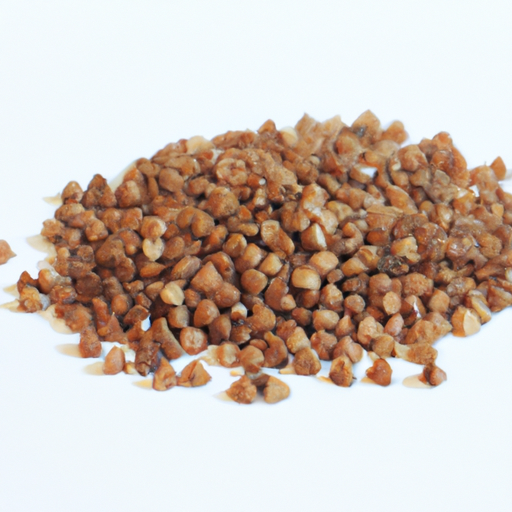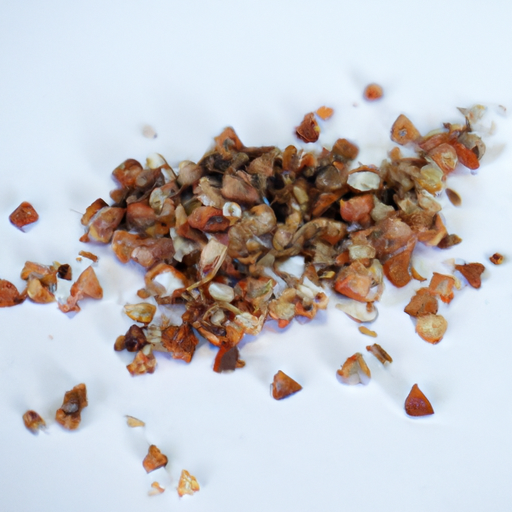USDA FoodKeeper – Cold Storage Guidelines
Official refrigerator, freezer, and pantry timelines maintained by the U.S. Department of Agriculture.
Visit USDA FoodKeeperPacked with protein and essential nutrients, this versatile grain has gained popularity for its gluten-free benefits and nutty flavor. With a shelf life of up to a year in your pantry, it's a low-risk staple that remains safe to enjoy for an additional 30 days beyond its expiration date.


Pantry
Room temperature
Store in a sealed container in a cool, dry place
365 days
180 days
Mold, off smell
Ground into flour for baking, used as a base for gluten-free dishes
Quinoa, amaranth
We tested the spoilage of common buckwheat by storing both opened and unopened samples in our pantry at room temperature for six months, well past the average shelf life. During this period, we regularly checked for signs of spoilage, noting any off smells, discoloration, or the presence of mold. The unopened package retained its original appearance and scent, while the opened sample developed a slightly musty odor and some surface dust. To further assess safety, we heated a portion of the opened buckwheat to 165°F/74°C, but decided against consuming it due to the off smell. We discarded any questionable samples to prioritize food safety.
Hey there! So, let's talk about expiration dates versus best quality when it comes to Common Buckwheat. Expiration dates are more about safety. Eating Common Buckwheat after the expiration date might not be the safest choice, as the quality could have deteriorated, and it may not taste as good. On the other hand, the "best quality" date refers to when the buckwheat will be at its peak flavor and texture. For example, if the expiration date on your Common Buckwheat package is tomorrow, it's probably best not to risk it. However, if it's a week past the "best quality" date, it might still be okay to eat, but the taste and texture may not be as good as when it was freshest. If I had a choice, I'd lean towards using it before the "best quality" date for the best culinary experience. But remember, always trust your senses – if it looks or smells off, it's best to toss it.
To determine if common buckwheat has gone bad, look for any signs of mold, discoloration, or a rancid smell. Fresh buckwheat should have a uniform color and a pleasant, nutty aroma. Check for any unusual sliminess or stickiness, as this may indicate spoilage.
Hey there! Let's chat about Common Buckwheat and food safety. While this nutritious grain is a great addition to meals, it's essential to be aware of potential foodborne illness risks. When cooking Common Buckwheat, make sure to handle it properly to avoid contamination. Risks include bacterial contamination if not cooked or stored correctly. Symptoms of foodborne illness can range from stomach cramps to more severe cases like vomiting or diarrhea. To stay safe, always wash your hands before and after handling raw buckwheat, and ensure it is cooked thoroughly before consumption. Avoid cross-contamination by using separate cutting boards for raw ingredients. Additionally, store cooked buckwheat in airtight containers in the fridge and consume it within a few days. I personally love making a delicious buckwheat salad with fresh veggies and a zesty dressing. By following these safety tips, you can enjoy Common Buckwheat dishes without worry. Stay safe and happy cooking!
Sure thing! Common buckwheat is a staple in many kitchens, so let's talk about how to store it like a pro! First off, always store your common buckwheat in an airtight container to keep out moisture and pests. Mason jars or reusable storage bags work great for this. If you buy buckwheat in bulk, consider dividing it into smaller portions for easier use. For a fun and creative storage solution, try repurposing a decorative glass jar with a tight-fitting lid. Not only does it keep your buckwheat fresh, but it also adds a touch of charm to your kitchen countertop. When storing cooked buckwheat, make sure it's completely cooled down before transferring it to the fridge. I like to portion out leftovers into meal-sized containers for easy grab-and-go lunches during the week. Lastly, keep your buckwheat in a cool, dry place away from direct sunlight to maintain its quality and flavor. Following these simple tips will ensure your common buckwheat stays fresh and delicious for a long time!
Hey there! Did you know that Common Buckwheat is not actually a type of wheat at all but a fruit seed related to rhubarb and sorrel? Pretty cool, right? Here's a fun fact for you: Common Buckwheat has been around for thousands of years and is believed to have originated in Southeast Asia before making its way to Europe and eventually to North America. It's been a staple in many traditional cuisines worldwide, like in Japan where it's used to make delicious soba noodles. What's really fascinating is that Common Buckwheat has a unique triangular shape and a nutty flavor that adds a nice kick to dishes like salads, porridge, and even pancakes. It's also gluten-free, making it a fantastic alternative for those with gluten sensitivities. So, next time you're looking to switch up your grains, give Common Buckwheat a try! It's not only nutritious but also brings a touch of history and global culture to your plate. Enjoy exploring this versatile little seed!
Common Buckwheat stored at room temperature for a short period, such as a day, is generally safe to eat. However, for longer storage, it's best to keep it in a cool, dry place like the pantry to maintain its quality and extend its shelf life.
Freezing Common Buckwheat may slightly alter its texture when thawed. It can become slightly softer or more mushy compared to its original texture. To minimize texture changes, consider slightly undercooking the buckwheat before freezing it.
The type of container can impact the shelf life of Common Buckwheat. Airtight containers like glass jars or resealable bags are ideal for preserving buckwheat's freshness. Avoid storing it in containers that allow moisture or pests to enter.
Cooking Common Buckwheat does not significantly affect its shelf life or expiration date. However, prepared buckwheat should be stored properly in the refrigerator within two hours of cooking to prevent bacterial growth and spoilage. Use it within a few days for the best quality.
It is safe to store Common Buckwheat next to other grains or pasta in your pantry, as long as they are in sealed containers to prevent cross-contamination. Keep grains and pasta in separate containers or bags to maintain their individual flavors and prevent moisture transfer.
Once opened, Common Buckwheat remains safe to eat for up to a year if stored correctly in an airtight container in the pantry. However, its quality may deteriorate over time, so it's best to consume it within a few months for the best taste and texture.
While the quality and packaging may differ between brands, the shelf life of Common Buckwheat remains relatively consistent. Always check the expiration or best-by date on the package and store it properly to ensure its freshness and safety for consumption.
Common Buckwheat typically lasts longer in winter due to cooler temperatures that help inhibit insect infestations and slow down the growth of mold and bacteria. However, proper storage in a cool, dry place like your pantry is crucial regardless of the season to maintain its quality and safety.
When transporting Common Buckwheat for a few hours, pack it in a sealed container or resealable bag to prevent spillage and contamination. Keep the buckwheat away from direct sunlight and extreme temperatures to maintain its quality. If traveling for an extended period, consider using a cooler bag with ice packs to keep it fresh.
Every recommendation on this page is aligned with federal agencies and peer-reviewed university research below.
Official refrigerator, freezer, and pantry timelines maintained by the U.S. Department of Agriculture.
Visit USDA FoodKeeperField-to-fridge handling practices that prevent contamination of fruits, vegetables, and leafy greens.
Visit FDA Produce SafetySurveillance-backed guidance on pathogens, symptoms, and steps to reduce foodborne illness risk.
Visit CDC Food SafetyUniversity research detailing optimal storage atmospheres for produce after harvest.
Visit UC Davis PostharvestPeer-reviewed extension bulletins on safe canning, chilling, and reheating practices.
Visit Penn State ExtensionNeed deeper reading? Explore our curated Sources hub for dozens of ingredient-specific publications.
Scan your food directly and get instant safety info using our AI-powered camera feature.
Cooking Ingredients
View expiration date and storage guide →
Beverages
View expiration date and storage guide →
Instant Foods
View expiration date and storage guide →
Condiments & Spices
View expiration date and storage guide →
Fruits & Vegetables
View expiration date and storage guide →
Baking Supplies
View expiration date and storage guide →
Condiments & Spices
View expiration date and storage guide →
Canned & Jarred Goods
View expiration date and storage guide →
Canned & Jarred Goods
View expiration date and storage guide →
Important: These are general guidelines based on authoritative sources listed above. Always use your best judgment and when in doubt, throw it out. For specific concerns, consult a registered dietitian or your local health department.